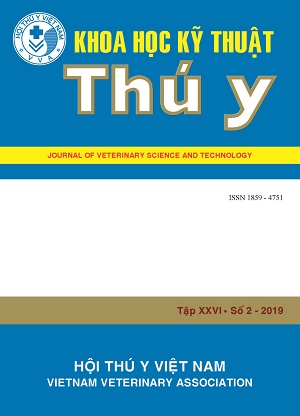Research on developing stages of oviduct fluke larvae in duck in the environment and intermediate host (freshwater snail)
Abstract
The result of experimental study on the developing stages of the oviduct fluke larvae in duck in the environment showed that in freshwater environment, eggs of Prosthogonimus spp. developed into miracidium larvae after 10-16 days. Out of 12 freshwater snail species used for experimental infection with fluke larvae, only the Bithynia siamensis was found to be the first intermediate host. The oviduct fluke eggs were swallowed by B. siamensis then miracidium was released out of egg and developed through several stages, such as: sporocyst, redia and cercaria. The sprorocyst looked like egg or oval shape, the young sporocyst contained many germ cells. These cells continued to divide, develop and form partitions, creating separate pockets (redia I). Redia I looked like a tree branch and contained a lot of germ cells. The redia II looked like oval shape and contained many cercaria. Cercaria was released from redia II, lived in the snail, then moved out of the snail, swimmed freely in the freshwater environment. The cercaria contained a large number of the gray pigmentes, appeared oral sucker, ventral sucker and digestive tract. The body length of cercaria was 100-120 μm and the body width was 60-70 μm.

